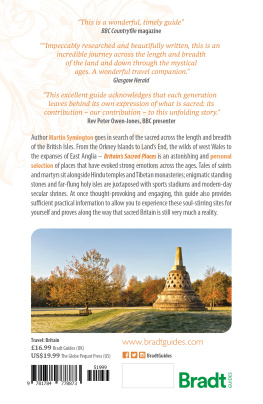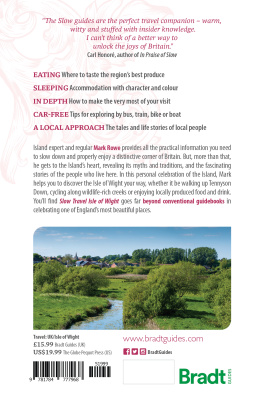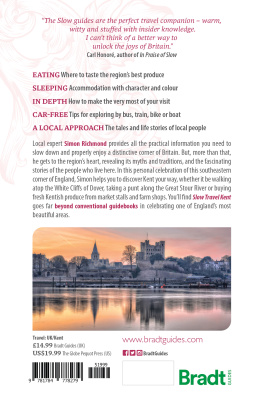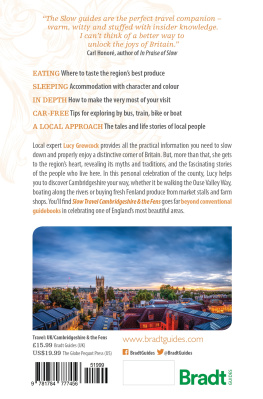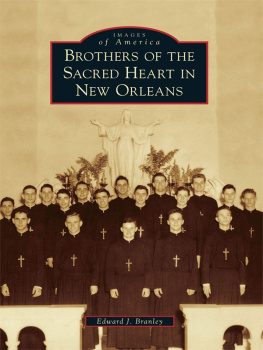Martin Symington - Britains Sacred Places
Here you can read online Martin Symington - Britains Sacred Places full text of the book (entire story) in english for free. Download pdf and epub, get meaning, cover and reviews about this ebook. year: 2022, publisher: Bradt Travel Guides Ltd., genre: Science / History. Description of the work, (preface) as well as reviews are available. Best literature library LitArk.com created for fans of good reading and offers a wide selection of genres:
Romance novel
Science fiction
Adventure
Detective
Science
History
Home and family
Prose
Art
Politics
Computer
Non-fiction
Religion
Business
Children
Humor
Choose a favorite category and find really read worthwhile books. Enjoy immersion in the world of imagination, feel the emotions of the characters or learn something new for yourself, make an fascinating discovery.
- Book:Britains Sacred Places
- Author:
- Publisher:Bradt Travel Guides Ltd.
- Genre:
- Year:2022
- Rating:3 / 5
- Favourites:Add to favourites
- Your mark:
- 60
- 1
- 2
- 3
- 4
- 5
Britains Sacred Places: summary, description and annotation
We offer to read an annotation, description, summary or preface (depends on what the author of the book "Britains Sacred Places" wrote himself). If you haven't found the necessary information about the book — write in the comments, we will try to find it.
Britains Sacred Places — read online for free the complete book (whole text) full work
Below is the text of the book, divided by pages. System saving the place of the last page read, allows you to conveniently read the book "Britains Sacred Places" online for free, without having to search again every time where you left off. Put a bookmark, and you can go to the page where you finished reading at any time.
Font size:
Interval:
Bookmark:



FOREWORD
There is something about the sacred sites of Britain how they have settled into the landscape, how they have taken hold quietly and convincingly. An American poet once wrote, Into this house we are born, into this world we are thrown; it is the same for every generation we arrive on this planet halfway through the film not knowing the ending. Sacred sites provide us with the story of what went before from the enigmatic chalk images slung across the hills in southern England, to standing stones, the intimacies of hidden wells and churches rising up from the middle of fields. Each provides us with a fragment of the story of the human quest for meaning and purpose, and the fact that so many of these sacred sites remain highlights the extent to which this essential human quest is honoured by subsequent generations.
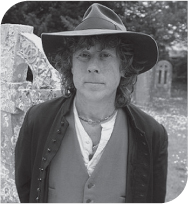
I rather like the way that we cannot quite understand all of the sacred sites, that we cannot hear them completely that they invite us to imagine their meaning, and ours. But there is little doubt that they speak a common human language that celebrates existence, love, the cycle of the seasons, acts of courage and the human experience of the numinous, the sacred, which in many instances they reflect.
This guide recognises the quest for the sacred as something that has happened but also as something that is happening all the time. Within these pages you will find long-established holy islands alongside pagodas and shrines to princesses and rock stars. This excellent guide acknowledges that each generation leaves behind its own expression of what is sacred: its contribution our contribution to this unfolding story.
Rev Peter Owen-Jones
BBC television presenter of
Around The World In 80 Faiths,
Extreme Pilgrim and
How To Live A Simple Life
INTRODUCTION
The idea that a place is sacred means myriad things to different people. For some, the word simply implies a place of devotion to a deity or creed. For many more, it is a multi-purpose term, suggesting that a particular location, monument, structure or journey evokes responses of emotion, soul or spirit.
Such sentiments cannot be pinpointed, much less rationalised, but my starting point in this guidebook is that sacred Britain is a reality. That there are places in England, Scotland and Wales that are sacred in the sense that they hold the power to move people to feelings of wonder, awe or transcendence.
Many of the places I travel to are prehistoric in origin ancient monoliths, stone circles, burial mounds or chalk hill carvings. The faiths of the people who created them are lost to us, and as religious sites they have changed entirely. Why are such places sacred? My answer is that, from world-famous monuments such as Stonehenge to forlorn chunks of rock attended only by half-forgotten legend, these ancient signatures on the British landscape have powerful moods attached to them and so hold a grip on the imagination. They can transport the visitor into a realm beyond the weariness of mere historical or archaeological information.
Similar senses of the mystical are waiting to be discovered at destinations of pilgrimage, which are another cornerstone of Britains Sacred Places. Travel to sacred places is, after all, the worlds oldest form of tourism. In Britain, the heyday of pilgrimage was the Middle Ages when millions made journeys to the sacred, trying to score credit against the whims of fate and hoping for reward in this life or the next.
Tombs of saints and martyrs, scenes of visions and miraculous cures, or simply places associated with revered people, were the targets. Vast edifices, such as the cathedral that rose around the relics of St Cuthbert at Durham, safeguard some; others are obscure shrines or holy wells whose existence will, I suspect, frequently surprise. And many more places of pilgrimage are at remote and far-flung extremities of Britain, such as the islands of Iona, Lindisfarne or Bardsey, where holy people have found refuge from worldly temptations.
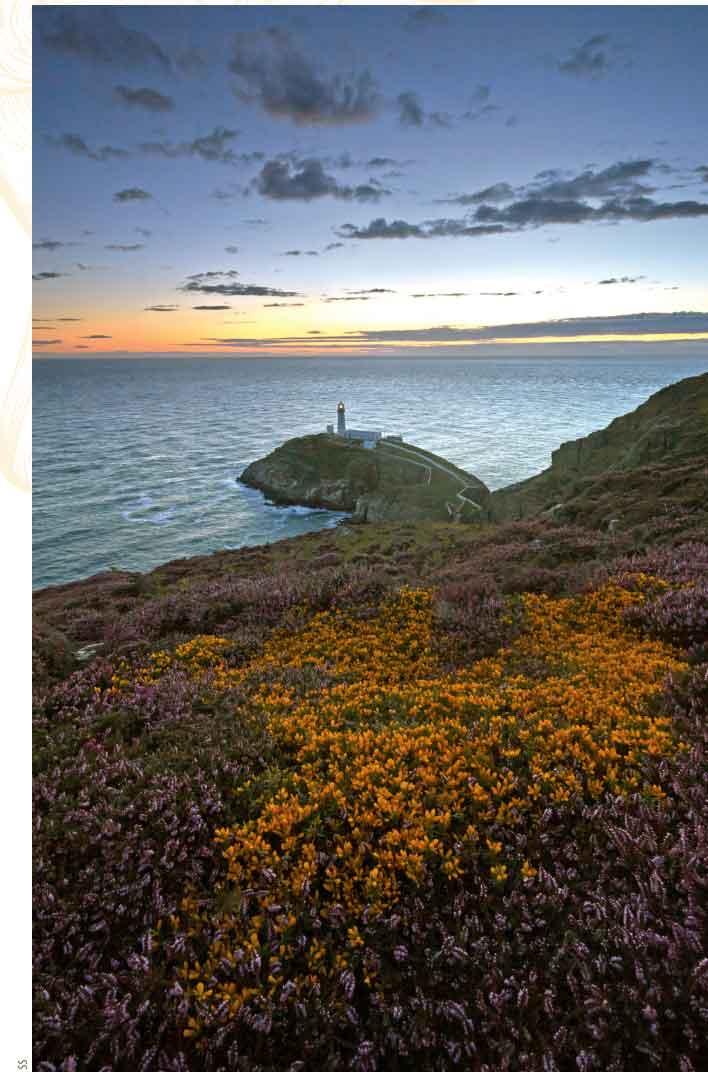
Sunset over South Stack Lighthouse, Anglesey ().
Such sites are, in the words of George MacLeod, thin places, where only a tissue separates the material from the spiritual. It is no coincidence that these are often also places of raw beauty and elemental high drama. Then, as now, the dividing line between pilgrims and tourists is blurred; the Canterbury Tales, for example, paint pictures of high jinks among the hair shirts. And it is in this spirit that, in an age when we can speed in a couple of hours along a route that took pilgrims weeks to walk, I have chosen as sacred places some of the Christian pilgrimage trails of the pre-Reformation era.
In more recent times, the flowering in Britain of other religions, particularly from the East, has woven fresh threads into the weft of sacred Britain. Guests in Quest meditate at a Tibetan Buddhist temple in the Scottish Borders; followers of Islam make pilgrimages to Londons Regents Park, there to pray facing Mecca under a huge gilded dome; and devotees, as well as tourists lured by tales of the exotic, flock to a dazzling temple in Neasden, Hinduisms largest outside India. All these, and numerous other places of worship, are part of sacred Britain.
And so to the places of secular pilgrimage which also take their place in my choice of sacred sites. The term sounds oxymoronic, but it is apparent that in this rationalist age where scientists seek to strip the mystery from existence, the yearning to visit places that evoke responses of emotion, soul or spirit remains immutable. Karl Marxs irreligion contributes pointedly secular overtones to his tomb in Highgate Cemetery, but his philosophical soulmates nevertheless seek to commune with him at the site.
Marx himself famously described religion as opiate of the masses, but might he have concluded that sport was a new religion, had he witnessed the stadiums, stars and crowds which echo cathedrals, prophets and devotees? And what to make of the extraordinary, constantly changing shrine to Princess Diana at the railings of Kensington Palace? Despite lacking any specific spiritual focus, this has become one of the most resonant pilgrimage destinations in modern Britain.
In the end, the innate and acquired atmosphere of a place which is what makes it sacred, or otherwise is a matter of how visitors experience it and hence is individual to them. My feeling is that a sacred place is one that needs to be felt in the heart, as well as viewed with the eye. I hope this book helps people find such places.
THE SLOW MINDSET
Hilary Bradt, Founder, Bradt Travel Guides
We shall not cease from exploration
And the end of all our exploring
Will be to arrive where we started
And know the place for the first time.
T S Eliot, Little Gidding, Four Quartets
This series evolved, slowly, from a Bradt editorial meeting when we started to explore ideas for guides to our favourite part of the world Great Britain. We wanted to get away from the usual top sights formula and encourage our authors to bring out the nuances and local differences that make up a sense of place such things as food, building styles, nature, geology or local people and what makes them tick. Our aim was to create a series that celebrates the present, focusing on sustainable tourism, rather than taking a nostalgic wallow in the past.
Font size:
Interval:
Bookmark:
Similar books «Britains Sacred Places»
Look at similar books to Britains Sacred Places. We have selected literature similar in name and meaning in the hope of providing readers with more options to find new, interesting, not yet read works.
Discussion, reviews of the book Britains Sacred Places and just readers' own opinions. Leave your comments, write what you think about the work, its meaning or the main characters. Specify what exactly you liked and what you didn't like, and why you think so.

